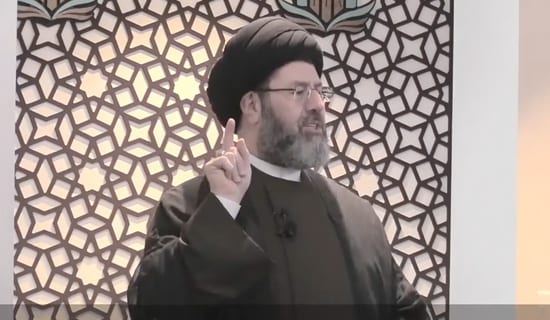In an article in the English-language online daily former Saudi Navy officer and columnist in Arab News, 'Abd Al-Latif Al-Mulhim wrote that despite its repeated threats, Iran will not close the Strait of Hormuz because it lacks the military capability to do so. He argued that with its outmoded and ill-maintained air force and submarines, Iran has neither the tools nor the expertise to carry off such an operation.
The following are excerpts from his article, in the original English.[1]
"Every five years, the Iranians threaten the whole world that they [will] close the Strait of Hormuz, [but] they never do. They simply can't do it... [even] if they want to do it.
"The Strait of Hormuz is the most important waterway in the world. It is about 35 miles wide, and an average of 15 oil tankers pass through it each day. Most people associate the width of the Strait of Hormuz with the navigation channel and the traffic-separation scheme. This is a normal maritime procedure to separate inbound and outbound traffic. The width of the navigation channel is only six miles... Traffic is monitored by the Sultanate of Oman [using a] radar located on an Omani island. Ships do eventually pass thorough Omani and Iranian territorial waters. A two-mile-wide navigation channel is very narrow in maritime terms. And the strait is very shallow... The strait is very challenging to navigate. [Ships] are restricted in [their] ability to maneuver.
"Mariners still remember the collision in the early morning hours of March 20, 2009 between a U.S. Navy submarine (USS Hartford) and a U.S. Navy ship (USS New Orleans) [which were] operating in the Strait of Hormuz. And on January 10, 2007, there was a collision between a Japanese tanker and the U.S. Navy submarine, the USS Newport. This shows how difficult it is to operate in the strait. Also, the area of the strait was the scene of a fierce, one-sided battle in April 1988 between the U.S. Navy and Iranian forces. The reason for the one-day battle was that a U.S. Navy ship, the USS Samuel Roberts, struck a mine planted by the Iranians. Navy analysts expected to see Iran become more moderate after [this] battle in regard to the closure of the strait or planting mines in its waters.
SUPPORT OUR WORK

"The irony about this battle was that most of the Iranian aviators [who participated in it] learned their flying skills at the same institute as the American aviators [who participated in it]. They were all trained at Pensacola Naval Air Station [in] Florida. And most of the Iranian naval officers aboard the sunken frigate went to school with some of the American officers aboard the US Navy ships. [In fact,] some of the Iranian and American officers aboard the ships involved in the battle were classmates of mine in America. The Iranian and American navies had officers who knew each other and attended the same school...
"In [the] military sense, Iran could [float] empty barrels in the middle of the navigation channel and declare to the world [that they are mines]. Mariners take these threats at face value and treat the empty barrels as active mines. But it is unlikely [that] Iran [will] declare anything of this nature.
"If Iran [makes] an official declaration to close the Strait of Hormuz, then [it will be] committing political and military suicide. The Iranians will not know what hit them. We all know what happened to Jamal Abdul Nasser when he closed the Strait of Tiran in 1967.
"Iran doesn't have the military capability to close the strait. About three years after the 1988 battle with the Iranians, the US Navy aircraft carrier USS Nimitz was launching F-14, F-18 and E-2 aircraft day and night while patrolling the Arabian Gulf... The Iranians knew about what the USS Nimitz could do. [So] later they decided to use a safer approach to defend the Iranian shores. They installed Silkworm Anti-Ship Missiles. But later on they realized they [couldn't] protect these missiles. They remembered what happened to the Syrians when they [deployed] missiles in the Bekaa Valley in Lebanon without air superiority.
"The Iranians have neither sophisticated torpedoes [nor] sophisticated surface-to-air missiles, and they have no airborne radar (AWACS) capability. As for their outdated diesel submarines, the Iranians are not well trained for sophisticated underwater operations, and their submarines have very limited capabilities. And the Iranian's [greatest] military weakness is that they don't have an air force. The Iranian high-tech planes – the F-14 (Tomcat) and F-4 (Phantom) – are very old, and their radar system... is inoperative due to age and lack of maintenance and spare parts. Their pilots are always operating in the dark because they have no command or control. The only strength the Iranian have is the land forces. They could [deploy] hundreds of thousands of soldiers. But these forces will be useless for sea battles... and have no air support.
"Believe me, I have nothing against Iran. But why doesn't Iran try to get closer to its neighbors? Haven't they learned [anything] from the loss of hundreds of thousands of lives during the Iraq-Iran War? It is easy to start a war, but difficult to end it. The Iranian military does not want any new encounter with Americans. They simply want to live in peace and harmony.
"I lost many of my Iranian classmates from my school in New York in Iranian conflicts and adventures that should have been avoided. The sad thing is [that] those Iranians were truly officers and gentlemen. They didn't need to die."
[1] Arabnews.com, January 3, 2012. The text has been lightly edited for clarity.




